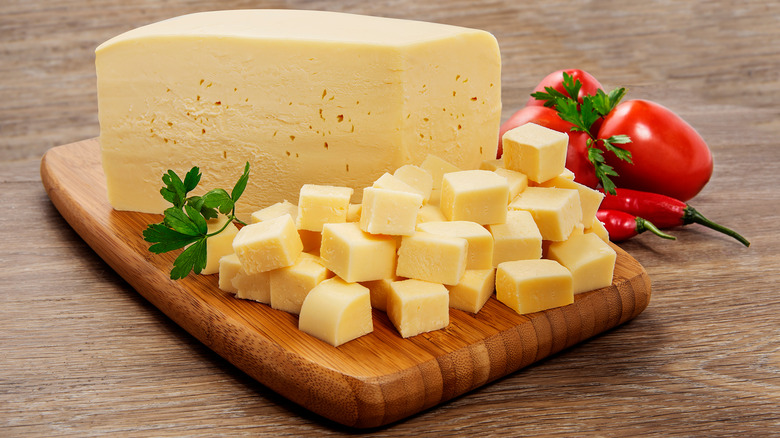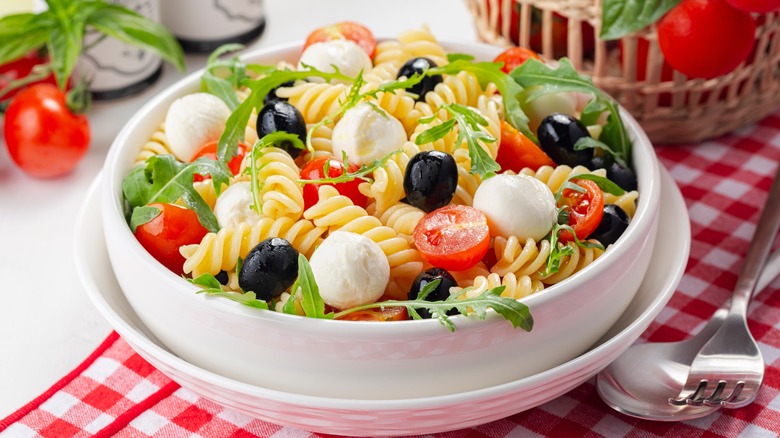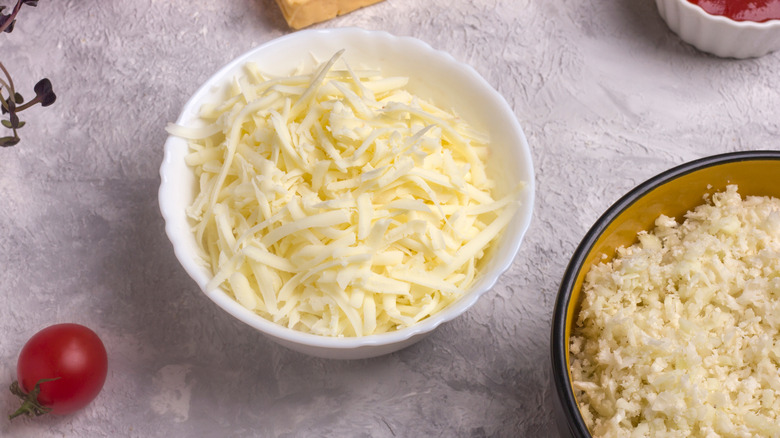Why Does Fresh Mozzarella Taste Different From Packaged Mozzarella?
They may carry the same name, but fresh mozzarella cheese and packaged mozzarella cheese taste so different that they might as well be two different types of cheese. The reason for the difference, as pointed out by eHow, is the two 'M's of mozzarella production—milk and moisture.
Fresh mozzarella cheese, which you'll most likely find in delicatessens, specialty stores, and maybe some grocery stores, is made from whole milk. You may find some processed mozzarella cheese made with whole milk in the grocery store, but it's likely to have been made with part-skim or skim milk to boost its shelf life.
As far as moisture is concerned, fresh mozzarella will be vacuum packaged in its thick liquid form to ensure that it maintains at least a 52% moisture content. On the other hand, packaging mozzarella cheese will have a moisture content of less than 50%, so it is less perishable.
The differences in milk and moisture between fresh mozzarella cheese and packaged mozzarella cheese dictate how long it can stay in your refrigerator. Fresh mozzarella should be used within a day of purchase, while packaged mozzarella can be kept in the fridge for about a week.
Different cheeses, different uses
Because they are essentially different cheeses, fresh and packaged mozzarella should be used differently in cooking. Simply Called Food provides a basic guide for using the two different kinds of mozzarella cheese.
For instance, fresh mozzarella is almost by definition meant to be eaten as soon as possible. Because of that, it's a good choice for giving a special touch and taste to salads. As a snack or side dish, heating fresh mozzarella atop a slice of tomato is a tasty treat.
Packaged mozzarella, which has a much thicker texture than fresh mozzarella, is ideal for two popular creations, pizza, and lasagna, because of the ease of grating it for perfect melting into those dishes.
But if you insist on getting at least some of the creamier taste of fresh mozzarella into pizza or lasagna, Simply Called Food suggests lightly freezing it to make it easier, if still a bit difficult, to grate.
Nutritional value of each type
While there are differences in how fresh mozzarella cheese and processed mozzarella cheese should be used in cooking, there is little difference in their nutritional value, except for their sodium content.
According to Our Everyday Life, a 1-ounce serving of fresh mozzarella contains about 70 calories, while processed mozzarella varies from 85 calories for whole-milk versions to 72 calories for part-skim versions.
Other nutritional measures are similarly close, with fresh mozzarella pegged at 5 grams of protein per ounce and processed mozzarella containing between 6 grams and 7 grams of protein per ounce, depending on whether it is whole milk or part-skim variety.
Fresh mozzarella is, though, lower in fat than the processed variety. The fresh mozzarella referenced by Our Everyday Life has 5 grams of fat per ounce, including 3 grams of saturated fat. Processed whole-milk mozzarella contains 6.3 grams of fat per ounce, including 3.7 grams of saturated fat, while processed part-skim mozzarella has 4.5 grams of fat, including 2.9 grams of saturated fats.
All of the fat totals here, for both regular and saturated fat, are well below the maximum recommended amounts of daily fat intake.
With regard to sodium, fresh mozzarella has far less of this potentially problematic dietary ingredient at 85 milligrams per ounce. Part-skim mozzarella has 175 mg of sodium, while whole-milk mozzarella has 180 mg of sodium. All totals, though, are well below the recommended maximum sodium intake of 2,300 mg daily.


